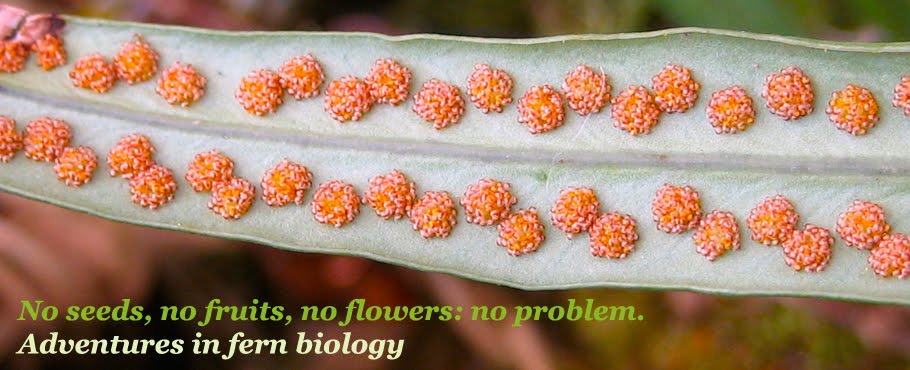I thought I'd start a short series about this summer's research trip to the Huron Mountains in Michigan with all the neat non-fern photos I got during the three weeks we spent there. First up is this beautiful milkweed, Asclepias syriaca. There's a row of them right in front of the house where researchers stay while working there, and they were a buzzing hub throughout our visit. Other flowers of note included this pink lady's slipper, Cypripedium acaule, and colombine, Aquilegia canadensis.
There's also abundant wildlife, including a rumored wolf, although we never (thankfully?) encountered it. Lots of butterflies though, and loons that paid nightly visits to the house where we stayed. There were also sandhill cranes, and are they ever loud!
There are many beautiful, unobstructed views in the Hurons, like these from the top of Mummy Mountain, looking out over Second Pine Lake. The last photo is the view from the porch of the researchers' house at sunset.

































